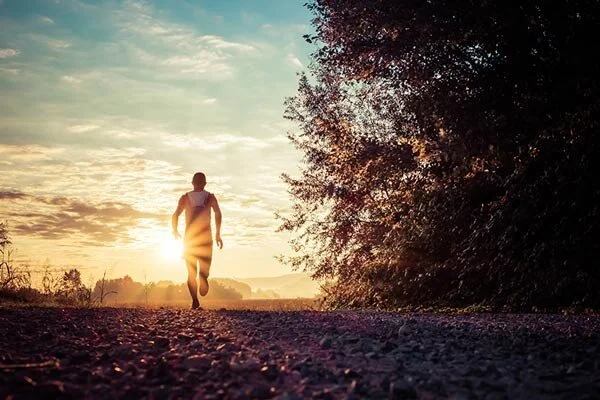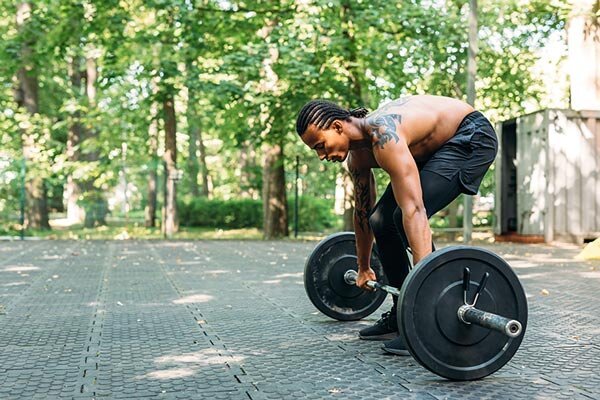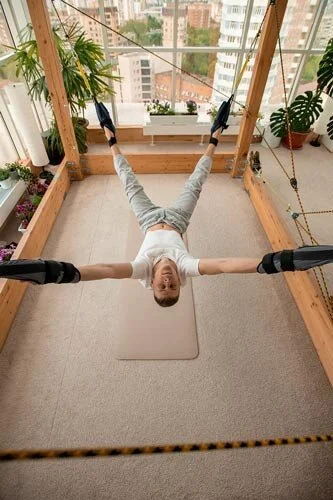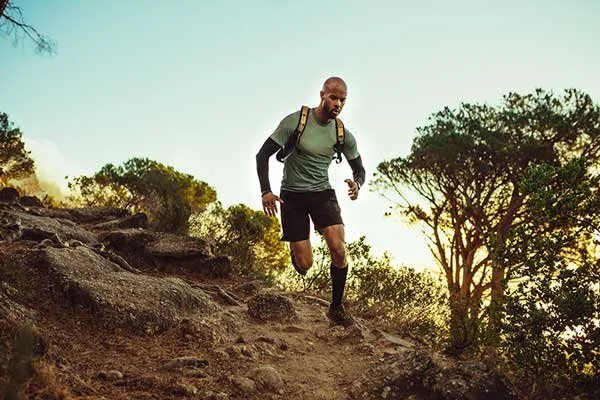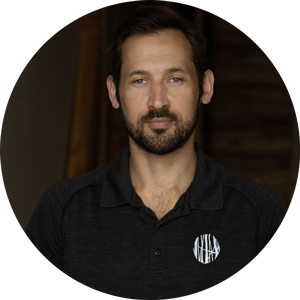AVOID RUIN, MEASURE AND MOVE BETTER
By Coach K
Approximate Reading Time: 4-7min
Have you ever received a poor grade on a school report card or an exam where your results were normally excellent? You probably remember that the feelings generated from your less-than-stellar performance stuck around for a long time. You may even carry around those same feelings and resulting behaviours now in your daily life.
The things we measure occupy much of our daily lives. We think about them, we let them lead our actions and even create our reality. We measure everything from our bank account balances to how many ‘likes’ or Happy Birthday messages we receive; we measure how fast we can run a kilometre or even how much we can or cannot lift at the gym. Tracking the wrong measurements can often be more harmful than good.
MEASUREMENTS AND GOALS
Let’s use Alex as an example. Alex stopped exercising back in University when things were busy. Since then, their career has been stable and they now have more time to get back into a routine. Alex’s goal is to be fit and healthy and decides that a good place to start is to run 10km. After all, they think, it’s really not that far.
Alex begins their journey nice and slow. They go out daily without pushing too hard but they become bored and obsessed with each distance they’ve run. Alex starts to measure the distances but not how they feel physically nor utilizing any movement related benchmarks or prerequisites. Now Alex is overdoing it. They try to push past crushing shin-splits just to get each run in as close to 10km as possible, which leads to even more painful compartment syndrome. Eventually the pain causes Alex to quit running and move to weight lifting.
MEASUREMENT BY COMPARISON
When Alex started their fitness journey at the gym they didn’t really set any goals but decided that how much weight they could lift dictated their level of fitness. In fact, when Alex looked around and saw all the other people at the gym, they noticed the fittest-looking people were lifting the heaviest. Instead of researching, or asking for help, Alex assumed that if they weren’t lifting as heavy, they were not as fit as the other people in the gym. Unaware that some of the people at the gym have years of physical literacy related to lifting, Alex dives in without proper form or building a solid foundation.
Despite being able to increase the load, the muscle pain becomes unbearable. Alex needs to take anti-inflammatories just to sit at work. When the pain doesn’t let up and despite Alex’s best efforts in the gym, they give up and move on to something ‘low impact’ and decide maybe yoga can help.
MEASUREMENT AND PATIENCE
In the first few classes, Alex is mesmerized by the grace and fluidity of the others in the class. They are so inspired they get a membership and go 5 days a week. For the first little while, Alex is progressing at a good pace, their body seems to have found a new rhythm and is in less pain than it was from running and weight lifting. Their back feels great and they decide they are ready to push themselves into more complicated positions. Attempting a challenging cobra position, they once again strain their back. They can’t understand how since ‘flexibility is supposed to be such a good measure of fitness!’ They don’t understand why they keep hurting and straining their body. This time, the back strain puts them out for two weeks, they let their membership slide. After all, the couch doesn’t hurt, does it?
WHAT WENT WRONG?
We know exercise is good for us but what we don’t know is that due to extended periods of time not moving, we lose proprioception. Instead, we accumulate movement dysfunction — believe it or not, we become physically illiterate to a degree. Proprioception is the body’s ability to sense its location, movements and actions. It’s how we’re able to move freely without consciously thinking about our environment with every single movement.
Another reason Alex had little real success is that they compared themselves to others - we’re all guilty of this at some point or another. As a result of not meeting ourselves where we’re at we overload our movement dysfunction and we load it too quickly. We don’t work on our physical literacy and are then surprised when we encounter injuries and pain.
This cycle is all too common in today’s fitness culture, even among those of us who make our livelihoods teaching others about physical literacy and have to understand this first-hand.
HOW TO FIX IT
CHANGE WHAT YOU ARE MEASURING AND SET SMALL, EDIBLE GOALS
Instead of being fixated on your workouts, try keeping track of more health-related metrics such as weekly average step counts, hours slept and energy levels. These bite-sized metrics are small and realistic which will allow you to make any necessary pivots or adjustments along the way. You’ll also be able to enjoy the success at each and every stage.
When you measure direct health-related aspects of your day-to-day life you’ll be setting the right foundations to layer ‘workouts’ underneath.
Want to measure elements of your fitness and workouts?
Instead of measuring specific weight lifted, numbers on a scale, speed or distances look at measuring the number of training sessions completed in a month. Remember, consistency is really the first step in building a lifelong foundation that you can build upon.
SET SPECIFIC METRICS
We suggest choosing metrics that transfer to the type of peak experiences you want more of in life. For example, say that your peak experience from last year was surfing in Tofino, Canada — train to support more peak experiences like that! Therefore, test metrics that help you surf better. Deadlifting 400 pounds won’t transfer as well as having good balance, speed in jumping up off the ground (or board), or mobility to handle wiping out.
An example set of metrics designed for a beginner surfer:
250m swim time
Single leg balance time
Burpees (with soft landings) in 1min
Resting squat time
Start small and slowly build up. Once you have enough fitness to reliably support your peak experiences you can explore other modalities of movement or simply embrace maintaining your fitness level! Constant growth isn’t possible or necessary to live fit and healthy. If you need the guidance of an expert to help set those foundational metrics to get you to your core goals, get the help! It’s worth it.
WORK ON YOUR PHYSICAL LITERACY
Say you learned to speak fluent Spanish when you were 16, but then stopped practicing for 20 years. Would you expect the same level of Spanish proficiency?
Hell no!
Physical literacy works in a similar way. If you don’t use it you lose it!
Even if you are someone who wasn't that proficient with physicality in your younger years. Regardless of where you are, everyone benefits from improving their physical literacy.
What does physical literacy mean in a practical sense?
Prioritize building proprioception and joint capacity -learn what your joints can and should be able to express. Build joint capacity slowly and consistently. Our joint capacity video is a great place to start. While you’re building your joint capacity, you’ll be building your proprioception. There are numerous other ways to build body awareness - research them and make them a part of your weekly routine or subscribe to resources designed specifically to help you get there.
TEST AND ADJUST
Test and adjust means that we have to keep reminding ourselves that long-term health is about long term health, not about how hard you hit it in a single workout. Life is a marathon, not a sprint. Consistency and incremental increases will serve you best, every time. Think about the tortoise and the hare story every time you work out.
If you miss any of the above steps you’ll be going back to square one each and every time. Be patient and watch yourself grow. As you embark on this journey, you may need to experiment with changing aspects of your weekly routine, training sessions etc. Embrace being your own experiment and find those things that will keep your practice consistent and injury-free.
Smashed past your realistic first set of small goals? Great work! Ask yourself, do you need to be much fitter to enjoy life? If so then look at bumping them up a little bit, give yourself an appropriate challenge. The key is patience and increments.
Remember, you will eventually plateau. If you really need to get fitter, enlist the expertise of a quality movement coach or trainer who has a similar mindset to Restore Human - sustainable, life long fitness. To reach those next levels, you will need to invest in more time and possibly even money - determine what’s best for you. Always keep in mind, if you feel healthy and have enough capacity to do the activities you love, there is nothing wrong with focusing on maintaining good health and enjoying life!
IN CLOSING
Having a human body isn’t always easy. Rest assured, many people who have been physically worse off or much older than you have turned it around. It just requires a commitment and a thirst for knowledge. Treat yourself well, build smart foundations and smart metrics for your individual fitness needs. Keep experimenting so that you can be a good pilot and mechanic of that glorious human space ship of yours.


